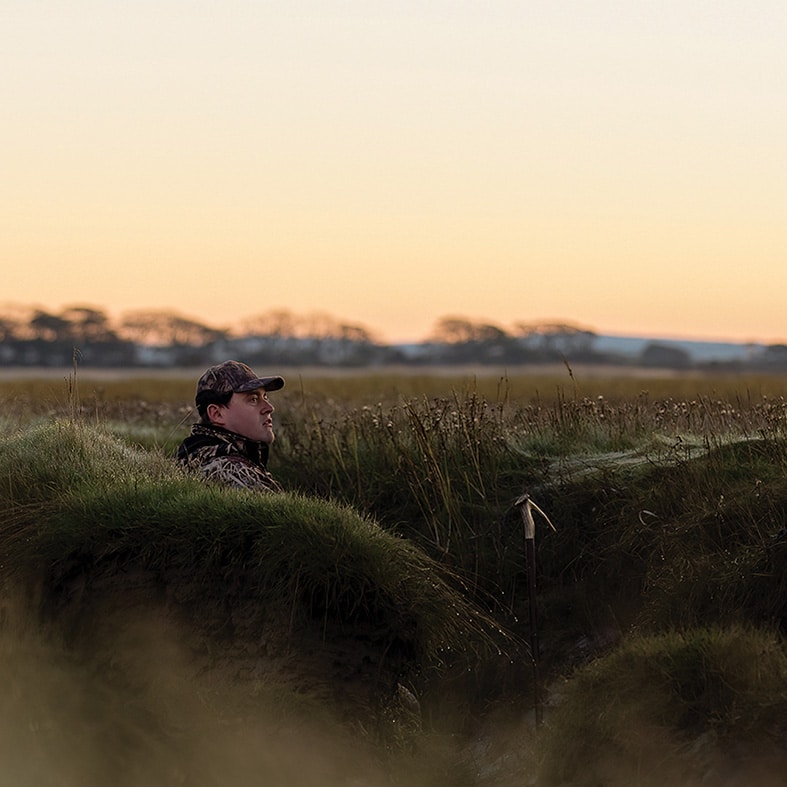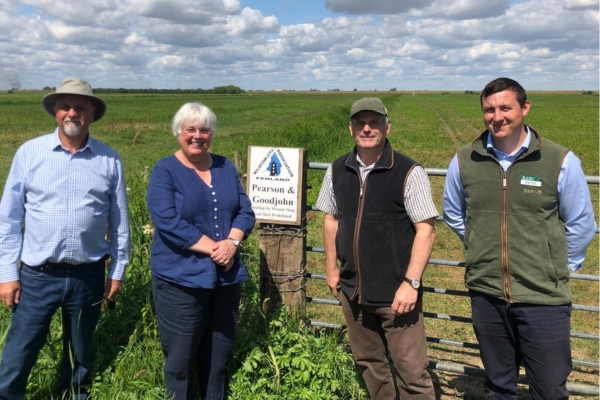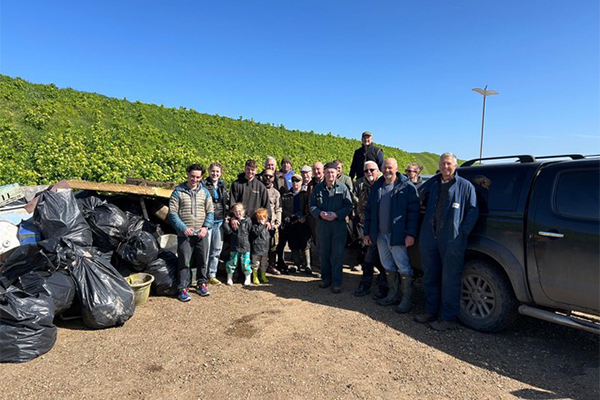
BASC Wildlife Fund pintail stamp on sale now
This year’s BASC Wildlife Fund stamp, titled Pintail over Wentloog, celebrates an important coastal habitat restoration project in South Wales.
Get information on the legal shooting season for mammals and birds in the UK.
Apply for funding for your project or make a donation today
Comprehensive information and advice from our specialist firearms team.
Everything you need to know about shotgun, rifle and airgun ammunition.
Find our up-to-date information, advice and links to government resources.
Everything you need to know on firearms law and licensing.
All the latest news and advice on general licences and how they affect you.


In the early days of the wildfowling season, getting your kit right can make the difference between a fruitful visit to the marsh and an uncomfortable expedition, as Chris Wright knows from experience.
Let’s set the scene. It’s early autumn, the skies are still generous with light, but there’s just enough bite in the morning air to suggest summer is on the wane.
September and October can be glorious months for those who shoot wildfowl – if you’ve packed wisely. This is no time to lug around half your garage in winter-grade gear. What you need is a well-considered kit list that keeps you cool, your birds fresh, and your dog (should you have one) cheerful.
So, whether you’re heading down to the foreshore at the break of dawn or setting up beside an inland body of water at dusk in the dimming light, here’s what you really need to take with you on early season forays.
If the tide or deep water comes into question, then yes… you might need waders. No, you do not need the neoprene jobbies rated for Arctic exploration.
Wildfowling often means standing in mud, marshes, or reedy margins where the water might feel chilly at 5am, but not enough to warrant slow cooking yourself. Lightweight breathable chest waders are the way to go – although you might be able to get away with just thigh waders. They’ll keep you dry, mobile, and most importantly, prevent the sort of slow broiling that leaves you smelling like a bad clam. If you decide to use thigh waders, be careful on the slippery banks. Chest waders will be more effective in protecting your dignity.
It’s tempting to dress for the peak of winter in all the camo you own, especially when you leave the house at stupid-o’clock in the morning and can see your breath. But by 9am, the sun’s up and you’re baking in the early autumn warmth. Please think layers. A moisture-wicking base, a breathable t-shirt, and a light windproof outer layer is usually enough.
If there’s a good breeze or the temperature’s uncertain, add a fleece or a gilet that can be stuffed into your rucksack once things warm up. Avoid cotton – it clings, it chills, and it’s useless once wet.
This one’s important. The early season is not the time to just deposit your birds into the back of the truck and hope they survive the drive home. Heat turns even the finest wild duck into something a fox would decline. Invest in a decent game bag or rucksack with a bit of insulation or, better yet, bring a small coolbox/bag with freezer blocks in your boot.
If you’re on the foreshore, sitting isn’t always an option. But inland, a lightweight seat can be the difference between a poised wildfowler and a muddy mess.
You’ll want to keep movement minimal and your visibility high – especially when the ducks (or geese) start to come in. Just make sure your chosen perch is robust enough to do the job and doesn’t come with sound effects. Silence and sturdiness are your allies.
There’s a fine line between calling and caterwauling. Early season wildfowl are not the canny veterans of January, but they’re no fools either. A few well-practised calls – mallard, teal, Canada goose, greylag goose, and maybe a wigeon whistle can work wonders. But do rehearse before you go. There’s nothing quite like fumbling with a call and sounding like a goose with asthma. Calling is a confidence game – sometimes half-hearted attempts are worse than silence, so call like you mean it.
A keen dog can be the greatest joy, but in September and October, they’ll be getting wet and then running warm. Towels are essential – for wiping down the dog, drying your hands, or for the car if you haven’t got a dog box. A collapsible water bowl might also be useful, especially where water sources may be salty, low or stagnant.
If your dog is new to live quarry shooting, early season could be a gift – it means fewer people out, milder weather, and plenty of daylight. Just don’t forget the treats or the poo bags. It’s hard to claim the moral high ground on conservation if you’re leaving steaming offerings behind.
Early season birds aren’t quite as cynical as their late-season cousins, but they’re not daft either. Bring a small, realistic pack of decoys – quality over quantity. If you’re on the foreshore, pack light – maybe a dozen mixed duck species in a decoy bag or rucksack, and don’t forget the lines and weights. Remember to untangle them before you’re knee-deep in saltwater.
If you’re targeting geese, then a handful of well-positioned full-body, shell or 2D decoys can do the job nicely. You don’t need dozens; six to ten can be more than enough to catch the eye of a passing skein.
Keep them spaced, facing into the wind, and give them room – bunched-up decoys might look natural to you, but they often scream ‘danger’ to a cautious gander. Again, if you’re on the foreshore, keep it simple. Goose decoys are bulkier, and lugging too many out over the saltmarsh is a fine way to ruin your morning before it’s begun.
One word… midges. Another word… regret. Especially inland, early mornings and warm evenings can be perfect midge weather. A small bottle of repellent is light, handy, and the only thing standing between you and a maddening cloud of airborne irritants.
Whether you’re relying on the tide timetable or sunset regulations (Northern Ireland specific), being punctual is not optional in wildfowling – it’s critical. An app or a simple laminated chart for tides, a watch, and a compass and/or GPS if you’re new to the area, are all worthwhile. Don’t assume you’ll get 5G on the estuary when the fog rolls in and the tide’s rising faster than your heart rate.
The temptation to load up like you’re off on a Victorian expedition is real. But early season shooting, at its best, is elegant in its simplicity: a person, a gun, a dog, and the open air. Pack with purpose. Travel light. Keep the birds cool and your feet dry. And when the ducks come skimming over the reeds, or the geese come off roost in that golden half-light, you’ll be ready – not sweating, not swearing, just smiling.


This year’s BASC Wildlife Fund stamp, titled Pintail over Wentloog, celebrates an important coastal habitat restoration project in South Wales.

Charlotte Cane MP gained an insight into wildfowl conservation and habitat management during a recent visit to the Ouse Washes.

Thirty members of Fenland Wildfowlers Association took part in an extensive litter pick along a nine-mile stretch of The Wash.